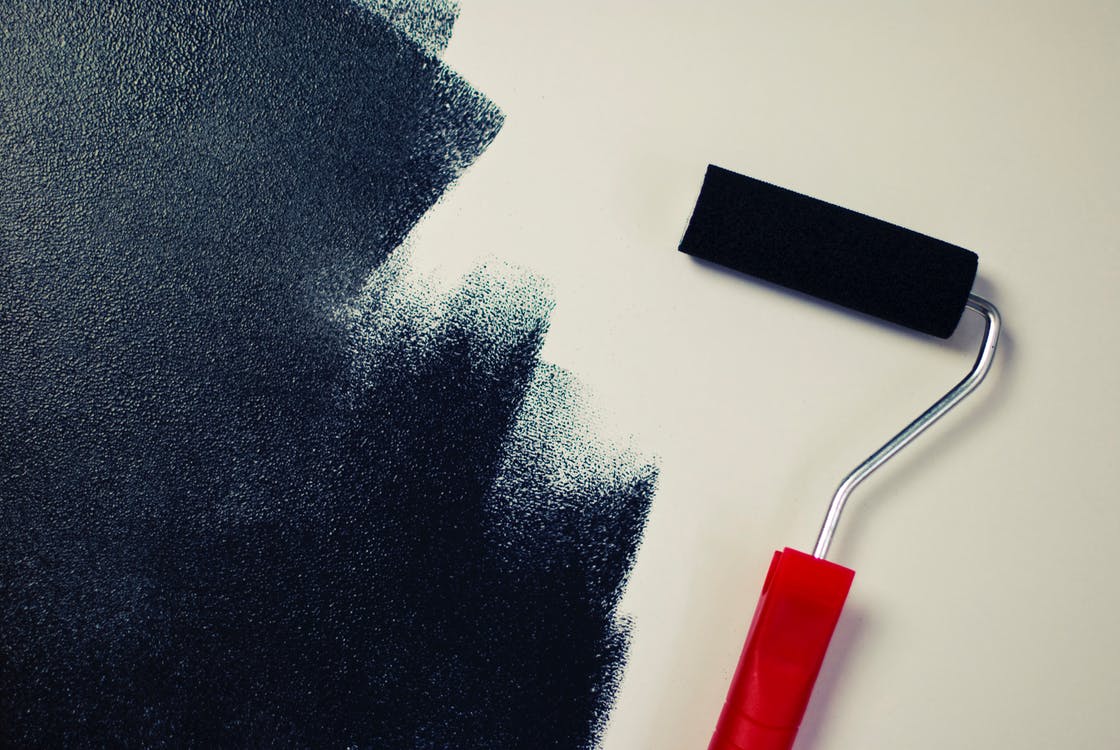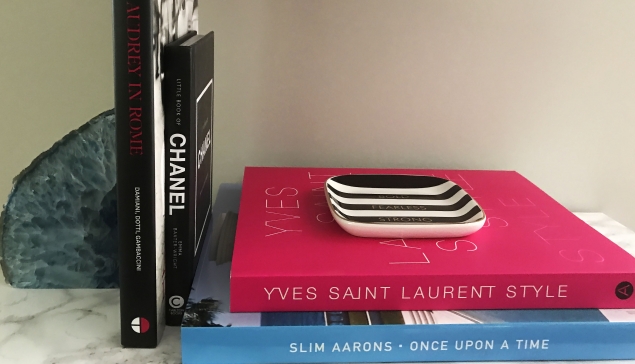So, the weather is nice, and you find yourself Bored in the City, why not refresh your home or room with a new coat of paint?! This article will outline some pro tips for painting the interior of your home. We will cover purchasing of materials, prepping the walls, painting tips and clean-up tricks! Let’s get you to pro status ASAP!
Purchasing Materials. Many people make the mistake thinking that they need to purchase the entire painting aisle at their local home improvement store when essentially you only need the following 12 tools:
- Roller – A 9-inch roller with matching sleeve size is recommended. For ceilings with a slight texture, use a sleeve with a 3/4” nap (nap = how thick the roller sleeve is), and for walls, a 1/2” nap will suffice. Purchase one sleeve per color.
Pro-tip: Use blue painter’s tape to wrap around and cover your sleeve tightly and in its entirety. By doing so, you eliminate “fuzzies” and other particles from sticking to your walls when you paint. Remove tape before painting. Ick, notice all of the cotton stuck to the tape?! If this tip was skipped, all of that would show on your walls.
- Paintbrush – A 2 1/2” angled paintbrush works best! Not only will you be able to cut into your corners, but you will also be able to paint your trim (woodwork). The angle gives you more control. If you are using both latex and oil-based paints, have a separate brush for each. Oil doesn’t mix well with latex or water.
Pro-tip: For water or latex-based paints use a nylon-bristle brush, and for oil-based paints use natural bristles.
- Blue Painter’s Tape – An easy release multi-surface painter’s tape in 1” to 1 1/2” in width. Painter’s tape will help ensure straight even lines without risking damage to other surfaces.
- Floor Protection – A heavy duty drop cloth or rosin paper to cover flooring, stairs, and furniture.
Pro-tip: Steer away from plastic. Although much cheaper, it tends to puncture easily and allows paint to get through to your floors. It has also been known to slide easily causing “on the job” injuries. Play it safe and use a drop cloth!
- Extension Pole – An extension pole allows you to reach your ceiling when painting easily.
Pro-tip: Have a wooden broom handle? Remove your broom top and screw the handle into your roller, and voila… an inexpensive extension pole!
- Spackle – A quick-dry spackle will be helpful in filling in the holes left behind from nails, picture hangings, etc.
- Sandpaper – Purchase sandpaper for smoothing out walls and debris on walls between first coat and second coat of paint. For an interior wall, a 120-grit sandpaper will suffice.
- Paint Tray – A paint tray will not only hold your paint when using your roller, but it will also allow you to wet your roller (dip and cover your roller in the paint) and dry your roller (using the shallow ramp on the tray to roll over a few times to remove excess paint).
Pro-tip: When not using your roller, remove the extension pole and leave the roller sitting in the deep end of the tray. This will avoid the paint from drying out and from leaving chunks of dried paint on your walls.
- Rags – This can be any old rag or painter’s rags purchased at your local home improvement store. The rags make cleaning up as you go a breeze. Accidently touched a wall you didn’t want to paint, use the rag. Got a paint drip on the wall or trim below, use your rag. Remember, the key is to clean it up as it is wet before it dries.
Pro-tip: To save a few extra dollars, rip up some old towels or t-shirts for use as rags while painting.
- Step Ladder – Use a step ladder to reach higher areas.
- Cut Can – A cut can is simply an extra gallon size paint can. The cut can is used to hold your brush along with 1/4 to 1/2 of your paint. Instead of carrying your gallon size paint can up and down the step ladder, which gets tiresome, use an additional can to hold less paint and fill as needed.
- Paint – Last, but not least, your paint! If this is your first time purchasing paint, please consult your painting specialist at your local home improvement store. For interior walls and ceilings, use a flat finish. In kitchens and bathrooms use an eggshell or semi-gloss finish. For trim and other woodwork use a semi-gloss or high-gloss finish.
Pro-tip: Having trouble figuring out how much paint you need? It is recommended to use 1 gallon of paint for every 300 -350 square feet of wall space to be painted. But, the hardest part of selecting a paint is having to decide what color to choose?!
Prepping the Walls. Now that you have what you need to get started, it’s time to prep the walls. Implementing the following steps will help you tackle your home like a pro!
- Move all your furniture to the middle of the room. If possible, move to another room.
- Remove all face plates from light switches and electrical outlets. Place the faceplates in a secure place, and keep the little screws in place so you don’t lose them.
- Remove all curtains and their hardware, paintings and home décor from the walls. This includes any tape or nails and screws on the walls.
- Spackle and sand holes left behind from paintings and home décor.
- Gently clean your walls with water, dish soap, and a rag to remove debris. Some painters also use trisodium phosphate to clean the walls.
- Once the walls are dry, using your painter’s tape, begin to tape off ceilings, window and door frames, doorknobs, and baseboard trimming.
Painting Tips. Now you’re prepped and ready to begin painting! Let’s go… this is the best part of any paint project because you begin to see your project come to life!
- Be sure to mix your paint cans. Even though you purchase multiple cans, the colors can vary in shades. Mix two gallons at a time in your paint tray and return to the can. This will ensure a consistent color on all the walls.
- Use the following order to paint your room – ceiling, walls, trim or other woodwork.
- When beginning any wall, you will want to paint a 2” to 3” border in the corner where it meets the wall. This is known as cutting the walls. Using your step ladder, paint the borders of the ceiling the entire perimeter then roll out the ceiling using your extension pole. Then you will repeat the borders at the top and bottom of the walls within the room before rolling them out.
Pro-tip: Beginning with the ceiling, cut the ceiling then roll it out. Repeat. After two hours of dry time, begin cutting in your walls then roll out. Repeat. After an additional two hours of dry time, paint your trim. Give the room 24 hours to dry before removing the tape and cleaning up.
Pro-tip: To avoid overlapping or marks on your walls when rolling out, be sure to roll out your walls and ceilings from one end to the other in straight lines. It is pertinent to ensure you have a wet roller. If your roller is dry, it will not only leave marks but will increase the risk of poor coverage of paint on your walls.
Pro-tip: Be sure to sand away any debris or other particles between your first coat and second coat.
Clean-up Tricks. Yay, you’ve completed your painting project, and your home looks awesome! You know what, it will look even better once it has been cleaned up. The following steps should be used to clean up and store your materials for future use.
- Store unused paint by covering the can with its original cover. Store in your basement for future use and touch-ups. Make sure to label the color by name and with a mark of the actual paint. It is recommended to store your paint cans upside down to create a tight seal between the cover and can.
Pro-tip: If disposing of paint, please contact your local waste management company to follow proper trash procedures. Depending on the type of paint, it may not be legal to dispose of your paint with your regular trash pickup due to fire and other hazards to the environment.
- Clean your tools. For both brushes and roller sleeves, rinse thoroughly in lukewarm water to clear water runs. Set roller sleeves aside to dry. For brushes, once clean, remove excess water and make sure the brush is molded into its original shape to dry.
- Remove tape from walls.
- Replace faceplates, home décor, paintings, and curtains.
- Remove drop-cloth or rosin paper from the floor and covered furniture.
- Vacuum or sweep your rugs and floors.
- Replace your furniture in its place.
CONGRATS! You have now refreshed your home in just a matter of a day or two! What a great way to stay active, achieve something, and not be Bored in the City! Invite friends over for a dinner or drink and enjoy the fruits of your labor! You have just completed your paint job like a pro!


_large.png)
